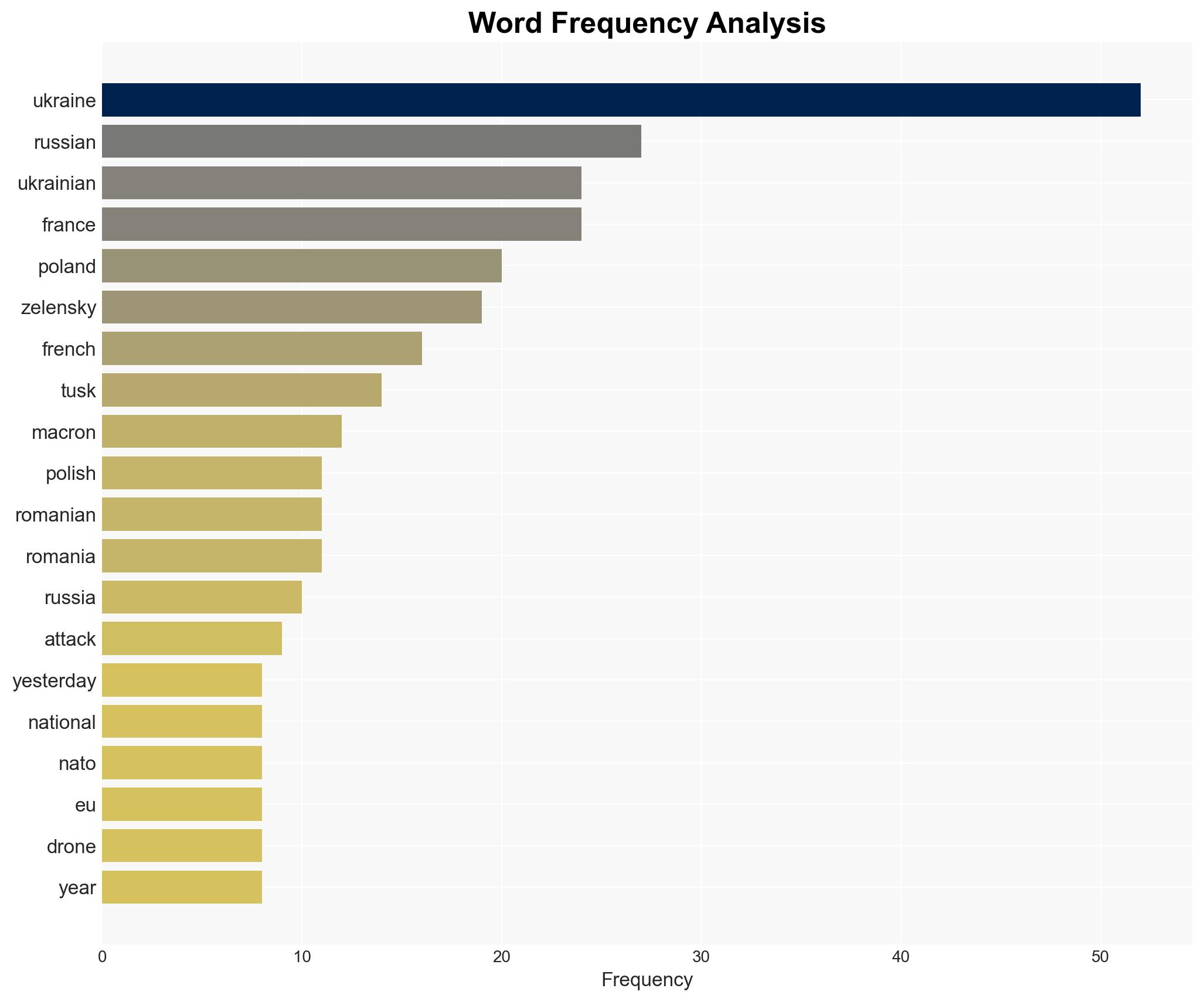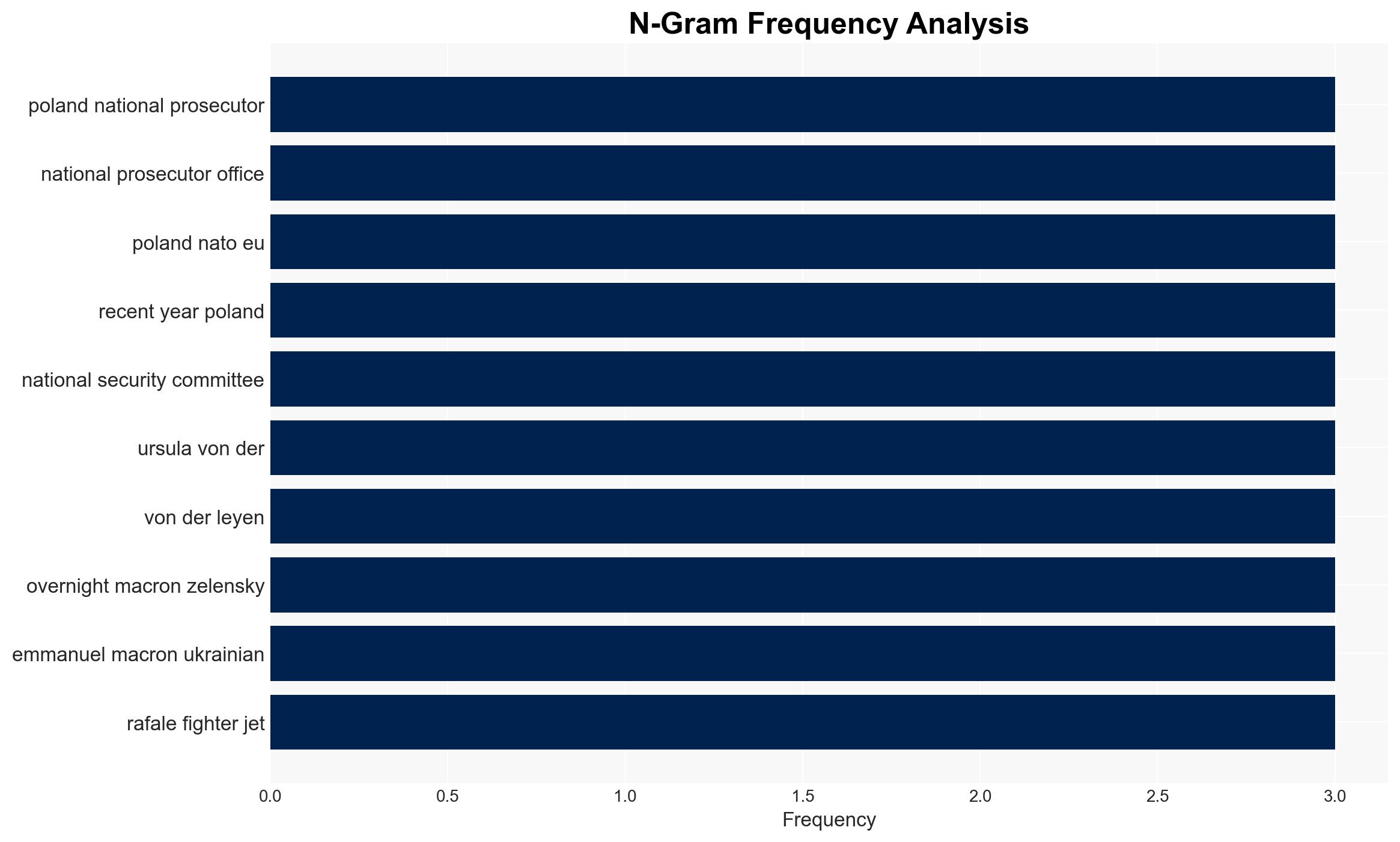Polish railway explosion an ‘act of sabotage’ says Tusk – RTE
Published on: 2025-11-17
AI-powered OSINT brief from verified open sources. Automated NLP signal extraction with human verification. See our Methodology and Why WorldWideWatchers.
Intelligence Report:
1. BLUF (Bottom Line Up Front)
The explosion on the Polish railway line is most likely an act of sabotage linked to Russian interests, aimed at disrupting Poland’s logistical support to Ukraine. This assessment is made with moderate confidence due to the geopolitical context and historical patterns of Russian tactics. Immediate action should focus on enhancing infrastructure security and diplomatic engagement with NATO allies to deter further incidents.
2. Competing Hypotheses
Hypothesis 1: The explosion is an act of sabotage orchestrated by Russian intelligence to destabilize Poland and disrupt its support to Ukraine. This is supported by Poland’s recent history of blaming Russia for similar incidents and the strategic importance of the railway in supplying Ukraine.
Hypothesis 2: The explosion is a domestic act of sabotage by non-state actors or internal dissidents aiming to create political instability within Poland. This hypothesis is less supported due to the lack of evidence of significant internal dissent with the capability to execute such an operation.
3. Key Assumptions and Red Flags
Assumptions include the belief that Russia has the motive and capability to conduct such operations and that Poland’s infrastructure is a critical target. Red flags include the potential for confirmation bias in attributing blame to Russia without conclusive evidence and the risk of overestimating the threat level without comprehensive intelligence.
4. Implications and Strategic Risks
The incident could escalate tensions between NATO and Russia, potentially leading to increased military posturing. Economically, disruptions in transport routes could affect supply chains. Politically, Poland may face internal pressure to respond decisively, risking further escalation. Cyber and informational threats may also increase as part of a broader hybrid warfare strategy.
5. Recommendations and Outlook
- Enhance surveillance and security measures on critical infrastructure, particularly transport routes.
- Engage in diplomatic efforts with NATO and EU partners to coordinate a unified response and deterrence strategy.
- Monitor for further incidents that may indicate a broader campaign of disruption.
- Best-case scenario: Strengthened security measures deter further attacks, and diplomatic efforts lead to de-escalation.
- Worst-case scenario: Continued sabotage leads to significant disruption and potential military confrontation.
- Most-likely scenario: Ongoing low-level incidents with heightened security and diplomatic tensions.
6. Key Individuals and Entities
Donald Tusk, Polish Prime Minister; Marcin Kierwiński, Interior Minister; Ursula von der Leyen, EU Chief; Mark Rutte, NATO Secretary General.
7. Thematic Tags
Structured Analytic Techniques Applied
- Cognitive Bias Stress Test: Expose and correct potential biases in assessments through red-teaming and structured challenge.
- Bayesian Scenario Modeling: Use probabilistic forecasting for conflict trajectories or escalation likelihood.
- Network Influence Mapping: Map relationships between state and non-state actors for impact estimation.
Explore more:
National Security Threats Briefs ·
Daily Summary ·
Support us
·





